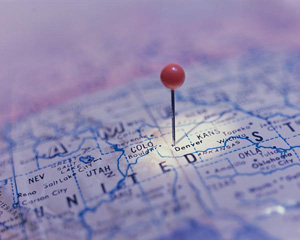
Geocoding: Accurate Location Master Data
I was reading David Loshin’s (@davidloshin) blog Refinements to Location Standards: Geocoding yesterday afternoon. David says geocode is an answer to finding locations that do not map directly to an address.
Geocoding, as most of us know, is the process of finding geographic coordinates which are expressed as latitude and longitude. For example: [13.746076, 100.540073] represents an address – Thanon Ratchadamri, Pathum Wan, Bangkok 10110 in Thailand.
It’s a truly amazing process which serves as a great guide for people who want to get to their destinations faster. We are seeing geocoding being commonly used on web today for services like finding driving directions, locating geographically nearest gas stations, restaurants or service locations when on road. (Heck, there are 1000’s of location service based apps today which wouldn’t have existed if this process wasn’t there).
Extending David’s discussion further – In future, we would like to see employment of geocoding in the way we store the location information in our Master Data Management systems. Today, MDM products provide provision to store address attributes like – street name, street number, city, state, postal code, country etc. This will have to change eventually as we will be using only 2 attributes to represent the location of our customer with accuracy at its finest.
The biggest advantage which we can gain with geocoding is identifying duplicate addresses.
The missing zip codes and non-standard representation of address fields are some of the issues we have with address formats today. Added to this, each country has its own way of representing addresses. These aspects of address lead to a wrong matching no matter how powerful our algorithms are, causing significant number of false positive (different member – match) and false negative (same member – don’t match) scenarios.
Geocoding resolves these issues as it provides a consistent location format across geographies and is compact and accurate.
So, few decades down the line, if someone asks you your address, act like miss smarty pants and tell them the coordinates.
I can’t wait to get a rebirth & be in 22nd century! If only nature permits!! How about you!?
COMMENTS
Leave A Comment
RECENT POSTS

Composable Applications Explained: What They Are and Why They Matter
Composable applications are customized solutions created using modular services as the building blocks. Like how...

Is ChatGPT a Preview to the Future of Astounding AI Innovations?
By now, you’ve probably heard about ChatGPT. If you haven’t kept up all the latest...

How MDM Can Help Find Jobs, Provide Better Care, and Deliver Unique Shopping Experiences
Industrial data is doubling roughly every two years. In 2021, industries created, captured, copied, and...
Geocoding sounds like an interesting idea for dealing with the wide variety or locations (distance of bridge along a road, postal address etc.) although I don’t think two coordinates are going to be enough in many cases. For example, which level of a flyover are you trying to locate? Or what floor is the customer on? Also, David points out, “Geocodes specified with enough precision provide a very good way to pinpoint a location.” however I think that would need to be very high degree of accuracy to reliably identify even reasonably large locations; a tower block could have many flats on each floor, hotel rooms are smaller still, or parking spaces, seats in a stadium, books in a library… Maybe I went too far!!
Good one Prash. However, as we say around my geocode: “The trees never grow into heaven”.
I have had my share of issues when matching geocodes, because there are of course some complications:
• A geocode can be expressed in many different systems. Examples are latitude and longitude picturing a round world, UTM X,Y coordinates picturing peels of the world and WGS84 X,Y coordinates picturing a world as flat as a computer screen.
• The coordinates of a single family house may be where the ground meets a public street, suitable for route planning, or the center of the house or a lot of other points.
• Sometimes geocodes for addresses on a street are interpolated, so they don’t represent the exact positions (but I guess that is getting better and better around).
Oh, I hate myself for being the Whinger in the Data Quality Zoo . And I actually guess that you are right that street names eventually will go away.
[…] because I, and some of our visitors, are old fashioned. As Prashanta Chan says in his blog post Geocoding: Accurate Location Master Data: It will be much better to invite folks to your […]
I observed the hyperlinks are not working in the comments. Here is the link to the 3D Geocoding I mentioned.
http://blogs.msdn.com/b/virtualearth3d/archive/2009/02/11/microsoft-photo-calibration-tool.aspx
PC – geo coding may not replace the address after all due to many factors. for example if you want to do suspect duplicate processing, address do play an important role in that, if I am not wrong. Now the address of same person with different phonetic names and a slight difference of longitude and latitude could not be able to identify a suspect. What I feel is a combination of latitude, longitude and the address information can help us to identify a suspect. Just my thoughts, may not be true…After all, you are the expert in MDM..:))
Regards
Bhavik
Thank you for your comment Bhavik,
Yes you are right. Geocoding in its current form will be a hard nut to crack. We relay hugely on address information today to decide whether or not two parties belong to an A1 match category. (Off course along with all other critical data elements like Name, DOB, Gender and Identification numbers).
Geocodes need to be more accurate in locating a specific address. We should be able to locate every location (house/flat/condo/office etc) using it. Also, making standard geocodes so those “slight” differences you mentioned go away is going to be key.
Your suggestion to use longitude and latitude along with address is a good starting point. In that way at least we are making an effort to employ them 🙂
i love your blog, i have it in my rss reader and always like new things coming up from it.
I was working to see the feasibility of geocoding my entire Customer addresses, But the problem with our addresses is it is so bad, that the geocoding APIs from Google or other geocode solution fails to identify them 🙁
The address usually contain Contact persons names / account payables information which might confuse the geo code APIs
Other problem is for any address outside US, esp Asian countries , Geocoding is still an issue..
I wish i could geocode all my addresses, that would be so great and deduplication of customer and addresses would me much easier..
-Idris
Hi Prahs
Data quality is critical fro geocoding. As IDRIS ppoints out we cannot automate geocoding without clean data as discussed in my post http://blog.masterdata.co.za/2013/06/18/how-important-is-quality-data-for-matching/
Of course you can never geocode all data – some of it will not have a reference, some of it may be PO BOX or similar unresolvable addresses – or some of it may just be missing to much information.
But we get pretty good results by cleaning and standardising eh raw address data we are fed.